|
|
| |
|
| |

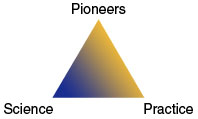
SpringerBriefs on
Pioneers in Science and Practice (PSP)
Edited by
Hans Günter Brauch,
AFES-PRESS, chairman
Free University of Berlin (Ret.)
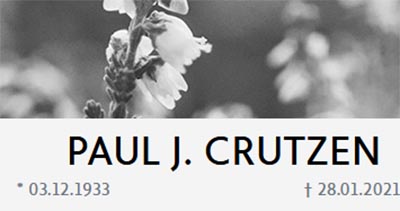
Nobel Laureate Prof. Dr. Paul J. Crutzen has passed away on 28 January 2021 at the age of 87. Condolences may be sent to here.
Obituaries by colleagues and in the global press may be accessed here and from the editor of this series.
Nachrufe und Berichte der deutschsprachigen Presse sind hier zugänglich.
A small video of his signing of the Golden Book of the town of Mosbach on the 31 May 2017 is here:
Photos of his participation in a private Brainstorming on the Anthropocene on 31 May 2017 in Mosbach are available here.
|
| Update in English (2022) |
| A collection of obituaries by colleagues of Paul J. Crutzen may be found on the website of the Max-Planck-Institute for Chemistry |
| |
| Aktuelle Würdigungen (2022) |
In German: Eine Würdigung von Paul Crutzen‘s wissenschaftlicher Arbeit und ihrer Auswirkungen auf politische Entscheidungsprozesse erfolgt auf der Jahrestagung der Vereinigung Deutscher Wissenschaftler (VDW) am 29.April in Berlin durch:
|
| |
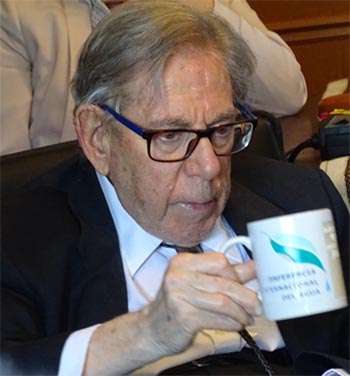 |
| |
| His last book on Paul J. Crutzen and the Anthropocene – A New Phase of Earth History with his selected texts on the Anthropocene will be published in summer 2021. Details are announced here. |
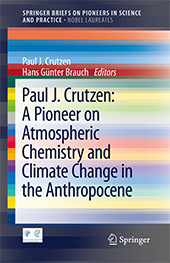
|
Paul J. Crutzen, Hans Günter Brauch (Eds.): Paul J. Crutzen: A Pioneer on Atmospheric Chemistry and Climate Change in the Anthropocene. Springer Briefs on Pioneers in Science and Practice No. 50 (Cham – Heidelberg – New York – Dordrecht – London: Springer International Publishing, 2016).
ISBN (Print): 978-3-319-27459-1
ISBN (Online/eBook): 978-3-319-27460-7
DOI: 10.1007/978-3-319-27460-7
Order this book on the Springer Website
Order electronic version and individual chapters
|
| |
|
Important Links on Paul J. Crutzen
Selected videos and audio recordings with Paul J. Crutzen
- Symposium on the 80th birthday of Paul J. Crutzen, Mainz, 2 December 2013
For individual videos of the talks on the Anthropocene symposium see below
- Interview with Paul Crutzen by Astrid Gräslund at the meeting of Nobel Laureates in Lindau, Germany, June 2000
- Chemistry Nobel Laureate Prof. Paul J. Crutzen’s keynote speech “Air pollution in Asia and its impact on regional and global climate” on Tuesday, 2 December 2003, at Chulalongkorn University in Bangkok (Thailand)
- Prof. Paul J. Crutzen at the Asian Institute of Technology, Bangkok, 3 December 2003, facilitated by the International Peace Foundation (part 1)
- Prof. Paul J. Crutzen at the Asian Institute of Technology facilitated by the International Peace Foundation (part 2)
- Prof. Paul J. Crutzen, 4 December 2003, uploaded by International Peace: Foundation
- Prof. Paul J. Crutzen at Chulalongkorn University, with an introduction by Uwe Morawetz, Chulalongkorn University (2003-2004), uploaded by International Peace Foundation on 23 December 2013
- Atmospheric Science in the human dominated era of the Anthropocene, Univer-za v Novi Gorici » Znanstveni večeri - Univerza v Novi Gorici, 21 October 2005,
- Dr Paul Crutzen, Nobel Prize Winner of Chemistry in 1995. The interview was recorded by UNEP OzonAction at the symposium held at the University of Cambridge, UK, on 7th May 2010
- Premio Capo d'Orlando 2010 - Vico Equense (terza parte)
- Paul Crutzen zur Klimaschädlichkeit von Biokraftstoffen und Biomasse
|
| |
|
On this Book
This book contains texts by the Nobel laureate Paul J. Crutzen who is best known for his research on ozone depletion. It comprises Crutzen’s autobiography, several pictures documenting important stages of his life, and his most important scientific publications. The Dutch atmospheric chemist is one of the world’s most cited scientists in geosciences. His political engagement makes him a tireless ambassador for environmental issues such as climate change. He popularized the term ‘Anthropocene’ for the current geological era acknowledging the enduring influence of humankind on planet Earth. This concept conceives humans to be a geologic factor, influencing the evolution of our globe and the living beings populating it. The selection of texts is representing Paul Crutzen´s scientific oeuvre as his research interests span from ozone depletion to the climatic impacts of biomass burning, the consequences of a worldwide atomic war – the Nuclear Winter - to geoengineering and the Anthropocene.
- Comprehensive collection of key scientific papers of Prof. Crutzen. Autobiographic chapter with photos on his life and career
- He made major contributions to atmospheric chemistry on ozone depletion
- Paul. J. Crutzen received in 1995 the Nobel Prize in Chemistry with Mario J. Molina and F. Sherwood Rowland
- Paul. J. Crutzen triggered global policy debates on nuclear winter, Anthropocene and sustainability.
Contents
Part 1: On Paul J. Crutzen -- 1: The Background of an Ozone Researcher; 2: Complete Bibliography of his Writings (1965-2015)
Part 2: Scientific Texts by Paul J. Crutzen -- 3: Influence of Nitrogen Oxides on Atmospheric Ozone Content (Crutzen); 4: Biomass Burning as a Source of Atmospheric Gases CO2, H2, N2O, NO, CH3CL and COS (Crutzen/Heidt/Krasnec/Pollock/Seiler); 5 The atmosphere after a nuclear war: Twilight at noon (Crutzen/Birks); 6: Nitric–acid Cloud Formation in the Cold Antarctic Stratosphere – A Major Cause for the Springtime Ozone Hole (Crutzen/Arnoldt); 7: Biomass Burning in the Tropics: Impact on Atmospheric Chemistry and Biogeochemical Cycles (Crutzen/Andreae); 8: A Mechanism for Halogen Release from Sea-salt Aerosol in the Remote Marine Boundary Layer (Vogt/Crutzen/Sander): 9: The Indian Ocean Experiment: Widespread air pollution from South and South-East Asia (Lelieveld/Crutzen/Ramanathan/Andreae et al.); 10: Geology of Mankind (Crutzen): 11: Albedo enhancement by stratospheric sulfur injections: a contribution to resolve a policy dilemma? (Crutzen); 12: N2O Release from Agro-biofuel Production Negates Global Warming Reduction by Replacing Fossil Fuels (Crutzen/ Mosier/Smith et al.)
Backmatter: Nobel Prize in Chemistry, Max Planck Institute for Chemistry, Author, Book |
| |
On the Author Paul J. Crutzen
|
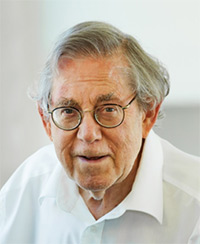
© Carsten Costard, Mainz/Germany
|
The research of Paul J. Crutzen has been mainly concerned with the role of chemistry in climate and biogeochemistry, and in particular the photochemistry of ozone in the stratosphere and troposphere. In 1970 he hypothesized that natural ozone production by the action of solar ultraviolet radiation on molecular oxygen (O2) is mainly balanced by destruction processes, involving NO and NO2 as catalysts. These catalysts in turn result from the oxidation of N2O, a product of microbiological nitrogen conversion in soils and waters. He and Prof. Harold Johnston of the University of California, Berkeley, pointed out that NO emissions from large fleets of supersonic aircraft could cause substantial ozone losses in the stratosphere. In the years 1972-1974 Crutzen proposed that NO and NO2 could catalyse ozone production in the background troposphere by reactions occurring in the CO and CH4 oxidation chains. Additional photochemical reactions leading to ozone loss were likewise identified. These gross ozone production and destruction terms are each substantially larger than the downward flux of ozone from the stratosphere, which until then had been considered the main source of tropospheric ozone.
In 1979-1980 Crutzen and co-workers drew attention to the great importance of the tropics in atmospheric chemistry. In particular, some measurement campaigns in Brazil clearly showed that biomass burning in the tropics was a major source of air pollutants, on a par with, or larger than, industrial pollution in the developed world. In 1982 Crutzen, together with Prof. John Birks of the University of Colorado, drew attention to the risk of darkness and strong cooling at the earth surface as a consequence of heavy smoke production by extensive fires in a nuclear war (‘nuclear winter’). This study and additional studies by R. Turco, B. Toon, T. Ackerman, J. Pollack and C. Sagan and by the Scientific Committee on Problems of the Environment (SCOPE), to which Crutzen contributed, showed that more people could die from the indirect consequences of a nuclear war than by the direct impacts of the nuclear explosions.
In 1986, together with Dr. F. Arnold of the Max Planck Institute of Nuclear Physics in Heidelberg, Crutzen showed that nitric acid and water vapour could co-condense in the stratosphere at higher temperatures than required for water ice formation, providing a significant part of a chain of events leading to rapid ozone depletion at high latitudes during late winter and spring (the so-called Antarctic ‘ozone hole’). His most recent research is concerned with the role of clouds in atmospheric chemistry as well as photochemical reactions taking place in the marine boundary layer, involving catalysis by halogen gases produced by marine organisms. Also, his current research deals with the chemical and climatic effects of the heavy air pollution which is found over Asia and other regions in the developing world: the so-called ABC (Atmospheric Brown Clouds) phenomenon. |
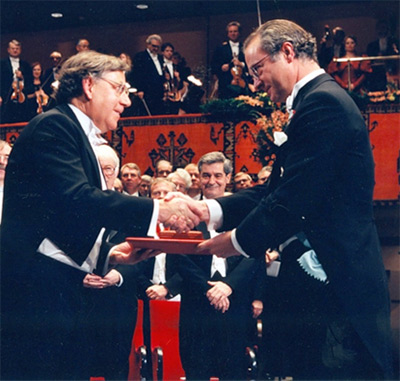
Stockholm, 10 December 1995 —
Paul Crutzen receives the Nobel Prize for Chemistry from Carl XVI Gustaf, King of Sweden.
© Reportagebild represented by dana press photo a/s, Industrivej 1,
DK-6000 Kolding, Denmark which granted the permission to use it here.
|
The Nobel Prize in Chemistry in 1995
The Royal Swedish Academy of Sciences has decided to award the 1995 Nobel Prize in Chemistry to Professor Paul Crutzen, Max Planck Institute for Chemistry, Mainz, Germany (Dutch citizen), Professor Mario Molina, Department of Earth, Atmospheric and Planetary Sciences and Department of Chemistry, MIT, Cambridge, MA, USA and Professor F. Sherwood Rowland, Department of Chemistry, University of California, Irvine, CA, USA for their work in atmospheric chemistry, particularly concerning the formation and decomposition of ozone.
|
| |
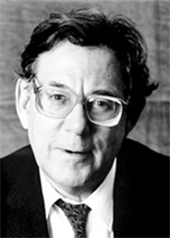
Paul J. Crutzen
Prize share: 1/3 |
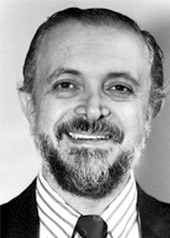
Mario J. Molina
Prize share: 1/3 |
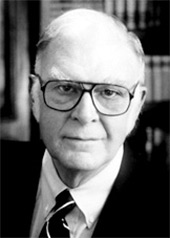
F. Sherwood Rowland
Prize share: 1/3 |
|
- Paul Crutzen was born in 1933 in Amsterdam. Dutch citizen. Doctor's degree in meteorology, Stockholm University, 1973. Member of the Royal Swedish Academy of Sciences, the Royal Swedish Academy of Engineering Sciences and Academia Europaea. Professor Paul Crutzen, Max Planck Institute for Chemistry, P.O. Box 3060 D-55020 Mainz, Germany.
- Mario Molina was born in 1943 in Mexico City, Mexico. PhD in physical chemistry, University of California, Berkeley. Member of the US National Academy of Sciences. Professor Mario Molina, Department of Earth, Atmospheric and Planetary Sciences MIT 54 – 1312, Cambridge MA 02139, USA
- F. Sherwood Rowland was born in Delaware, Ohio, USA, 1927 and deceased in 2012. Doctor's degree in chemistry, University of Chicago, 1952. Member of the American Academy of Arts and Sciences and of the US National Academy of Sciences, where he was Foreign Secretary.
Source: "Press Release: The 1995 Nobel Prize in Chemistry". Nobelprize.org. Nobel Media AB 2014. Web. 3 Jan 2015.
<http://www.nobelprize.org/nobel_prizes/chemistry/laureates/1995/press.html > and at: <http://www.nobelprize.org/nobel_prizes/chemistry/laureates/1995/illpres/reading.html>
and for the Award Ceremony Speech by Professor Ingmar Grenthe of the Royal Swedish Academy of Sciences is at:
<http://www.nobelprize.org/nobel_prizes/chemistry/laureates/1995/presentation-speech.html>. |
| |

|
Interview with Paul Crutzen by Astrid Gräslund at the meeting of Nobel Laureates in Lindau, Germany, June 2000. Paul Crutzen talks about family background, early education and interest in natural science; his work in the Institute of Meteorology in Stockholm (5:02); his discovery (6:55); the ozone layer (15:42); the Greenhouse Effect (19:10); ozone holes (23:43); and the consequences of a 'Nuclear winter' (27:09). See a Video of the Interview, 34 min., at: <http://www.nobelprize.org/mediaplayer/index.php?id=734>.
Prof. Paul J. Crutzen on the eve of his 80th birthday on 2 December 2013 at the symposium The Anthropocene
organized in his honour by the Max Planck Institute of Chemistry in Mainz. Photo by Carsten Costard who granted permission. |
| |
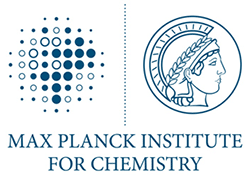
On the Max Planck Institute for Chemistry
Aiming at an integral scientific understanding of chemical processes in the Earth System from molecular to global scales.
Current research at the Max Planck Institute for Chemistry in Mainz aims at an integral understanding of chemical processes in the Earth system, particularly in the atmosphere and biosphere. Investigations address a wide range of interactions between air, water, soil, life and climate in the course of Earth history up to today´s human-driven epoch, the Anthropocene: see at: <http://www.mpic.de/en/ employees/honors-and-awards/the-anthropocene.html>.
Research at the Max Planck Institute for Chemistry has been at the forefront of science throughout its existence. Since the Institute’s foundation in 1912, three of its directors were awarded with the Nobel Prize for Chemistry: Richard Willstätter in 1915 for the revelation of the structure of chlorophyll and other plant pigments, Otto Hahn in 1944 for the discovery of nuclear fission, and Paul Crutzen in 1995 for the elucidation of atmospheric ozone chemistry.
The research departments and focal points of the Institute have gone through a history of change and scientific evolution. What began in 1912 with classical organic, inorganic and physical chemistry at the Kaiser Wilhelm Institute for Chemistry in Berlin evolved into radiochemistry and nuclear physics in the 1930s, leading to the discovery of nuclear fission by Otto Hahn, Lise Meitner and Fritz Strassmann.
As the Institute was severely damaged towards the end of World War II it was moved to the Swabian Alps in today’s Baden-Wuerttemberg. There the chemists worked provisionally from 1944 to 1949 until the Institute moved a second time to the campus of the newly founded Johannes Gutenberg University in Mainz. At the same time it was integrated into the Max Planck Society, the successor of the Kaiser Wilhelm Society, Institute for Chemistry. Since 1959 the Institute also carries the name “Otto Hahn Institute” in honor of its previous director and the first president of the Max Planck Society.
In the 1960s and 1970s the Institute’s research portfolio was extended from Physical Chemistry, Nuclear Physics and Mass Spectrometry to Cosmochemistry, Isotope Cosmology and Air Chemistry. Meteorites and moon dust samples were studied and the interplay of atmospheric gases, particles and meteorology were investigated. In the 1980s new departments for Geochemistry and Biogeochemistry were founded, in 2001 the Particle Chemistry department was established jointly with the Institute for Atmospheric Physics at the Johannes Gutenberg University of Mainz. In 2012 the Multiphase Chemistry Department and in 2015 the Climate Geochemistry Department was founded.
Nowadays, the research focus of the Max Planck Institute for Chemistry is on Earth System science, in particular on the chemical processes occurring in the atmosphere and their interactions with the biosphere and oceans. It also includes the influence of humans, as unprecedented urbanization and industrialization in the past centuries have changed the course of natural processes on our planet, in an epoch now known as the Anthropocene.
Currently, the institute employs some 300 staff in five departments
Scientists conduct laboratory experiments, collect samples and record measurement data during field campaigns utilizing airplanes, ships, and vehicles. The practical work is complemented with mathematical models that simulate chemical, physical, and biological processes from molecular to global scales. One of the major goals is to find out how air pollution, including reactive trace gases and aerosols, affect the atmosphere, biosphere, climate, and public health.
A description of current research topics is given in the Institute Reports.
|
|
| |
On Paul J. Crutzen’s Books
|
 |
Crutzen, P.J. and J. Hahn, 1985:
Schwarzer Himmel.
S. Fischer Verlag, 240 pp. |
|
Pittock, A.B., T.P. Ackerman, P.J. Crutzen,
M.C. MacCracken, C.S. Shapiro and R.P. Turco, 1986:
Environmental Consequences of Nuclear War,
SCOPE 28, Volume I: Physical and Atmospheric Effects,
Wiley, Chichester, 359 pp;
2nd edition 1989. |
| |
|
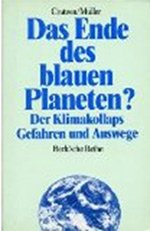 |
Crutzen P.J. and M. Müller, 1989:
Das Ende des blauen Planeten?
C.H. Beck Verlag, 271 pp. |
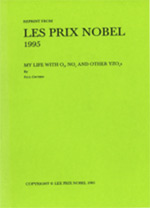 |
Crutzen, P.J., 1996:
My life with O3, NOx, and other YZOx compounds (Nobel Lecture).
Angew. Chem. Int. Ed. Engl., 35, 1758-1777 |
| |
|
|
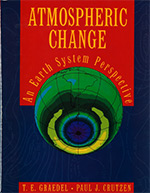 |
Graedel, T.E. and P.J. Crutzen, 1993:
Atmospheric Change:
An Earth System Perspective.
W.H. Freeman, New York, 446 pp |
 |
Graedel, T.E. and P.J. Crutzen, 1995:
Atmosphere, Climate, and Change.
W.H. Freeman, New York, 208 pp. |
| |
|
 |
Graedel, T.E. and P.J. Crutzen, 1996:
Atmosphäre im Wandel.
Die empfindliche Lufthülle unseres Planeten.
Spektrum Akademischer Verlag, Heidelberg, 221 pp. |
|
Enquete Commission
"Preventive Measures to Protect the Earth's Atmosphere", 1989:
Interim Report: Protecting the Earth's atmosphere:
an International Challenge.
Ed. Deutscher Bundestag,
Referat Öffentlichkeitsarbeit, Bonn, 592 pp. |
| |
|
 |
Enquete Commission
"Preventive Measures to Protect the Earth's Atmosphere", 1990:
Protecting the Tropical Forests:
A High-Priority International Task.
Ed. Deutscher Bundestag,
Referat Öffentlich-keitsarbeit, Bonn, 968 pp. |
|
Enquete Commission
"Preventive Measures to Protect the Earth's Atmosphere", 1991:
Protecting the Earth:
A Status Report with Recommendations for a new Energy Policy.
Ed. Deutscher Bundestag,
Referat Öffentlichkeits-arbeit, Bonn, 2 Volumes.. |
| |
| |
Crutzen, P.J., J.-C. Gerard and R. Zander (Eds.), 1989:
Our Changing Atmosphere.
Proceedings of the 28th Liège
International Astrophysical Colloquium
June 26-30, 1989,
Université de Liège, Cointe-Ougree, Belgium, 534 pp. |
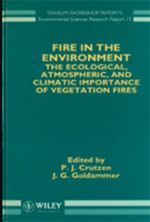 |
Crutzen, P.J. and J.G. Goldammer, 1993:
Fire in the Environment:
The Ecological, Atmospheric, and
Climatic Importance of Vegetation Fires.
Dahlem Konferenz (15-20 March 1992, Berlin), ES13,
Wiley, Chichester, 400 pp. |
| |
|
 |
Graedel, T.E. and P.J. Crutzen, 1994:
Chemie der Atmosphäre.
Bedeutung für Klima und Umwelt,
Spektrum Akademischer Verlag, Heidelberg, 511 pp. |
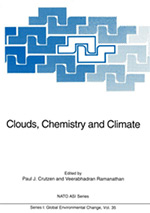 |
Crutzen, Paul J., Ramanathan, Veerabhadran (Eds.), 1996:
Clouds, Chemistry and Climate,
Nato ASI Subseries I |
| |
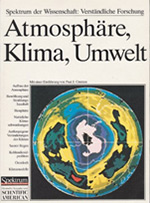 |
Crutzen, P.J., 1996:
Atmosphäre, Klima, Umwelt
(Edited and with an introduction by P.J. Crutzen),
Spektrum Akademischer Verlag, Heidelberg, 227 pp. |
|
Crutzen, P. J., G. Komen, K. Verbeek
and R. van Dorland, 2004:
Veranderingen in het klimaat.
Koninklijk Nederlands Meteorologisch Instituut,
De Bilt, The Netherlands, 16 pp.
(in Dutch) |
| |
|
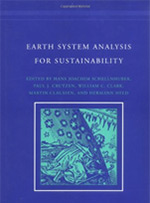 |
Earth System Analysis for Sustainablilty,
edited by H. J. Schellnhuber, P. J. Crutzen,
W. C. Clark, M. Claussen, and H. Held,
Dahlem Workshop Reports, MIT Press, 2004. |
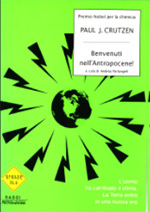 |
Crutzen, P. J., 2005:
Benvenuti nell’Antropocene!
Arnoldo Modadori Editore S.p.A., Milano, Italy.
(in Italian) |
| |
|
|
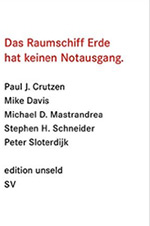 |
Das Raumschiff Erde hat keinen Notausgang (German)
Paperback – May 1, 2011
by Paul J. Crutzen, Mike Davis,
Michael D. Mastrandrea, Stephen H. Schneider,
Peter Sloterdijk |
|
| . |
| |
|
|

Prof. Dr. Jos Lelieveld opening the Symposium in Mainz on 2 December 2013
on the occasion of Prof. Paul J. Crutzen’s 80th birthday devoted to The Anthropocene,
The photo was taken by Carsten Costard who granted permission.
|
|
Important Links on Paul J. Crutzen and the Anthropocene

Symposium in Mainz on 2 December 2013 on the occasion of
Prof. Paul J. Crutzen’s 80th birthday devoted to The Anthropocene.
Photo by Carsten Costard who granted permission.
9.00: MUSIC+ OPENING REMARKS
9.20 Prof. Dr. Wolfgang Schön, Vice President Max Planck Society
9.30 Doris Ahnen, Rhineland – Palatinate, Minister for Education, Research, Further Education and Culture
9.40 Dr. Georg Schütte, State Secretary, Federal Ministry of Education and Research
9.50 Michael Müller, Former Parliamentary State Secretary 10.00-1010: Bernd Schmidbauer, Former Minister of State

START SYMPOSIUM
-
-
11.45 - 12.15: Prof. Dr. Ralph J. Cicerone, National Academy of Science, USA
-
12.15 - 12.45: Prof. Dr. Mario J. Molina, University of California in San Diego, USA
-
-
-
15.00 - 15.30: Prof. Dr. Henning Rodhe, University of Stockholm, Sweden
-
-
-
-
17.45 - 18.15: Prof. Dr. Meinrat O. Andreae, Max Planck Institute for Chemistry, Germany
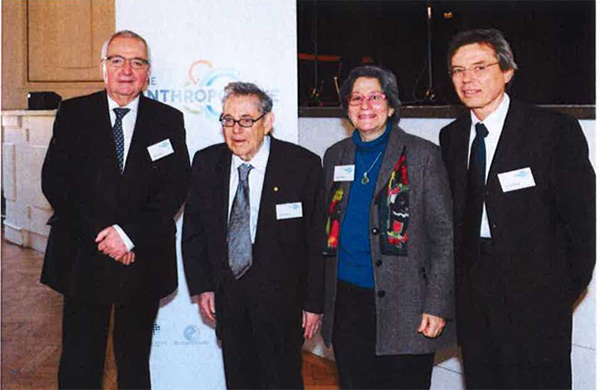
On the occasion of the Symposium in Mainz on 2 December 2013 on the occasion of
Prof. Paul J. Crutzen’s 80th birthday devoted to The Anthropocene.
From the left to the right: Prof. Dr. Klaus Topfer, Prof. Dr. Paul. J. Crutzen,
Prof. Dr. Susan Solomon, Prof. Dr. Jos Lelieveld
Photo by Carsten Costard who granted permission.
|
|
|